United States
Canada Acts while U.S. Lags on Rail Oil Tank Car Safety
Transport Canada jumped past U.S. DOT on April 23 by taking decisive action on "exploding" oil tank cars that are traveling throughout North America due largely to an insufficient oil pipeline network. Within three years, the older cars must go.
Renewables Account for 92 Percent of New Power in the United States
Although the United States built less new energy capacity than in the same time period last year, renewable energy dominated the capacity to come online so far in 2014.
'Sticks' and 'Carrots' Required to Build a Mature Transportation System
Gabe Klein says cities can do a better job providing mobility by focusing on the sticks and carrots of transportation—improving transportation options and creating disincentives to driving, respectively.
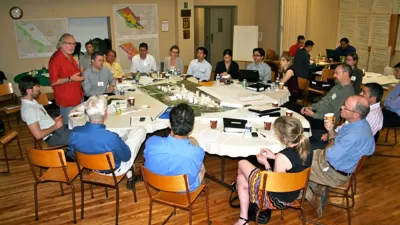
Engage; Don’t Rage: Use a Design Charrette to Negotiate Your Next Development Proposal
Despite the investments required of a design charrette, Robert Freedman makes the case that the process can save time and money on complex projects by way of three primary benefits.
Transportation Considerations for Aging Populations
An article on PlannersWeb details the considerations relevant to the needs of people over 65, who are growing more multi-modal and car-independent every year.
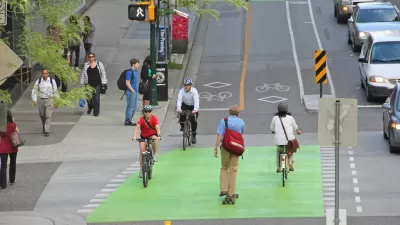
What Millennials Want: A Multi-Modal City
A recent study finds evidence of an overwhelming desire by Millennials to live multi-modal, car-lite lifestyles. They're even prepared to move to find what they want.

Big Data’s Victory Over Anonymity
A writer laments the advances made by data collection in cities—once a location where people could maintain or seek anonymity.
Senator Elizabeth Warren’s Candid Take on the Foreclosure Crisis
The Boston Globe provides an excerpt from the new book by Senator Elizabeth Warren, wherein she recounts her troubled reaction to a conversation with then Treasury Secretary Timothy Geithner.

Will the Neil deGrasse Tyson of Planning Please Stand Up?
Do you have to be a “plannerd” to think planning is cool? Is there a planner alive who can bridge the divide between the mysteries of planning and general public interest? One writer dares to hope.
A Brief History of Your Neighborhood
While some contend that our communities are sculpted by an unfettered free market, there are a variety of programs and policies that underwrite the costs of poorly planned development. "A Brief History of Your Neighborhood" examines a few.
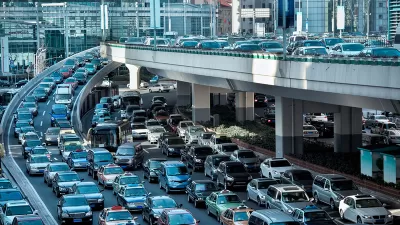
Which Cities Get to Work Early (or Late)?
According to new analysis by Nate Silver, New York City might be more aptly described as the city that sleeps in.
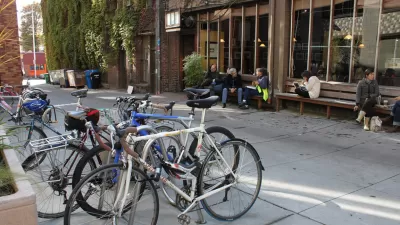
Alleyways as Pathways to Urban Revitalization
From D.C. to Seattle, alleys are being reinvented as people-friendly spaces. Often perceived as dirty and dangerous, alleys are moving beyond garbage and garages to become havens for pedestrians, public art, and small business.

Which States Best Prioritize Walking and Biking?
The most recent coverage of the Alliance for Biking and Walking’s 2014 Benchmark report compares each of the states for how much federal transportation funding they devote to active transportation.
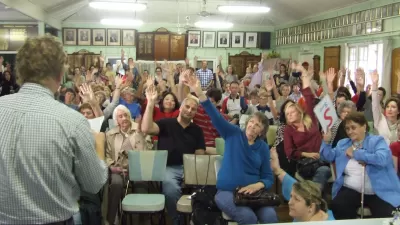
Strengthening the Bond between People and Placemaking
A research team at MIT Urban Studies and Planning, led by Susan Silberberg, released a paper examining “the interactions between placemaking, community participation, and the expanding ways communities are collaborating to make great public places.”

Can the Garden Suburb Save the Suburbs?
“Can Paradise be Planned?” asks Allison Arieff in a recent op-ed. The article discusses new books by architect Robert A.M. Stern and photographer Christoph Gielen to look for reasons for optimism with regard to suburbs and planning.
Top 10 Reasons for a New American Dream
For three generations, the American Dream was largely defined by continual suburban expansion. A new urban dream has emerged, and it is here to stay.
Study: Active Commutes Correlate to Positive Public Health Outcomes
The Alliance for Biking and Walking’s 2014 Benchmarking report found a strong correlation between active commuting rates and health outcomes like diabetes, obesity, and high blood pressure.

The Urban Reordering: Can the United States Make it Stick?
The trend toward the urban has been documented from every possible angle, but a recent op-ed wonders whether it will be possible for the federal government to make a course correction that ceases the endless subsidies for the suburbs.
Breaking News on Keystone XL Pipeline: More Delay
Don't expect President Obama to issue a yes or no decision on whether to build TransCanada's Keystone XL pipeline until after the November elections. A pending Nebraska court case and millions of public comments were given as the reason for the delay
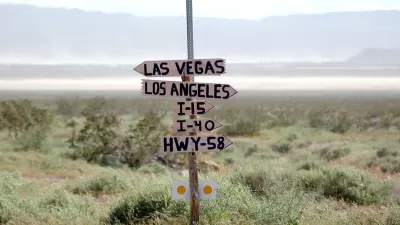
Mapping Where People Don't Live
A map released this week and shared on numerous websites shades the 4,871,270 U.S. Census Blocks with zero population. That includes rugged backcountry and suburban super malls.
Pagination
Urban Design for Planners 1: Software Tools
This six-course series explores essential urban design concepts using open source software and equips planners with the tools they need to participate fully in the urban design process.
Planning for Universal Design
Learn the tools for implementing Universal Design in planning regulations.
planning NEXT
Appalachian Highlands Housing Partners
Mpact (founded as Rail~Volution)
City of Camden Redevelopment Agency
City of Astoria
City of Portland
City of Laramie


































